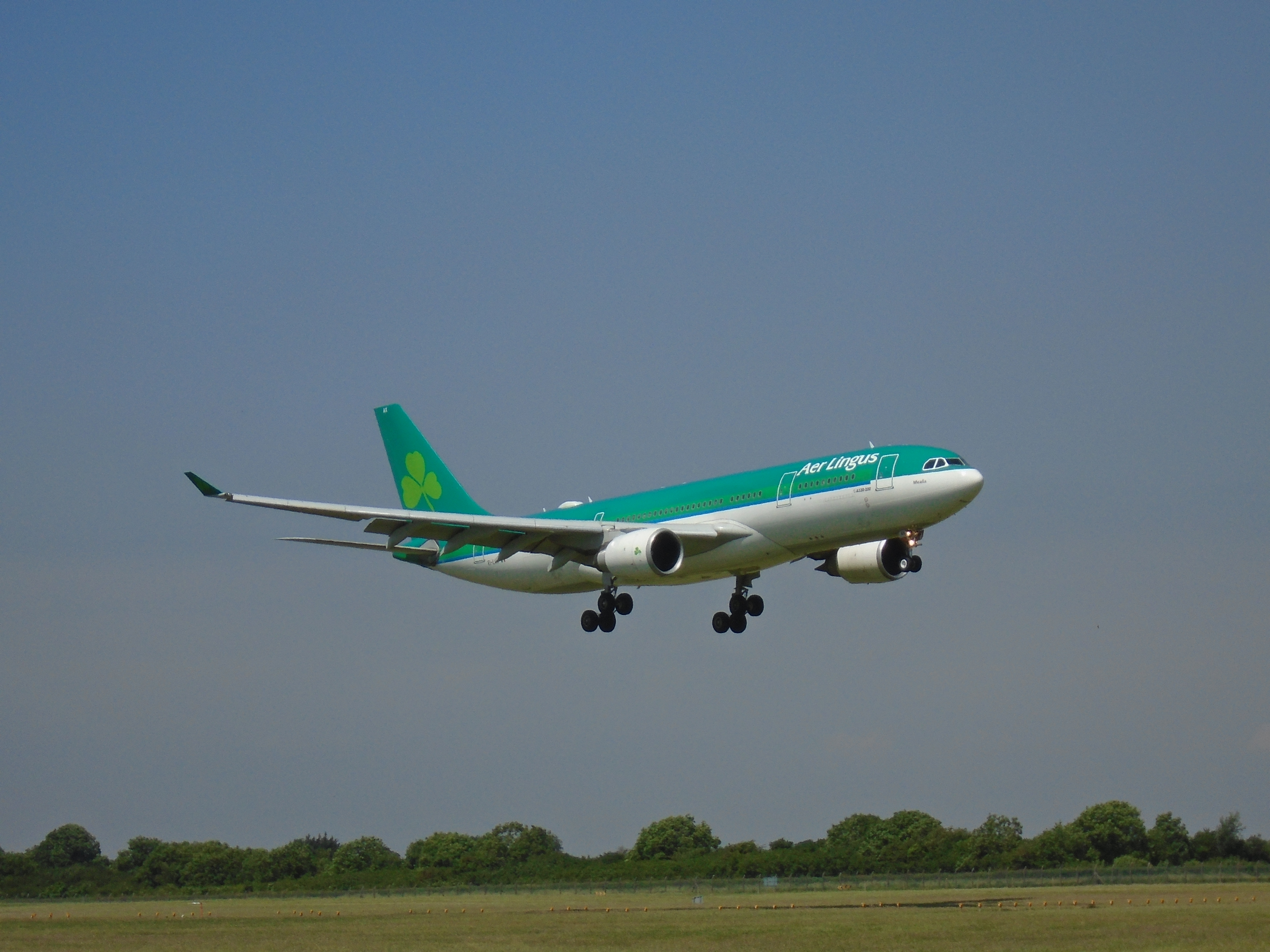




15 Oct 2025
The Documentation Dilemma: Why Paper Trails Still Define Asset Value
In an age where almost everything in aviation is being digitised from flight tracking to predictive maintenance one thing remains stubbornly old-fashioned: paperwork. Aircraft leasing and trading still rely heavily on complete, verifiable documentation to determine an asset’s true value. Every nut, bolt, inspection, and repair must be recorded, signed, and traceable. If it’s not, the aircraft’s financial and operational credibility can collapse overnight.
That simple rule guides one of the most complex industries in the world. An aircraft’s documentation isn’t just a collection of logbooks and certificates, it's its biography. It tells the story of how the aircraft was built, maintained, and operated across its lifespan. Without that story, no buyer, lessor, or regulator can confirm that the aircraft is safe, compliant, or even legal to fly.
Digitalisation is changing how that story is stored, but not its importance. Cloud databases, blockchain verification, and AI tools are helping aviation companies manage records faster and more securely. Yet, when it comes to value and trust, the paper trail or its verified digital twin still rules.
For lessors, investors, and airlines, documentation isn’t bureaucracy, it's currency. It defines whether an aircraft can be sold, leased, financed, or grounded. And in a market where every asset is worth millions, that paper trail often determines who wins and who walks away.
Why Does Documentation Still Define Aircraft Value?
Because in aviation, records are proof of reality. An aircraft’s value isn’t based only on how it flies or looks, it's based on the story told by its documentation. Every inspection, repair, and modification has to be recorded to prove that the aircraft is safe, legal, and well-maintained.
These records form the aircraft’s official identity. Without them, even the most advanced jet becomes just metal and engines with an uncertain past.
It’s About Trust, Not Paperwork
Documentation is the foundation of trust between airlines, lessors, investors, and regulators. Buyers use these records to confirm that maintenance has been done correctly and on time. Lessors depend on them to assess the asset’s health and future value. Regulators rely on them to issue airworthiness certificates.
It’s Like a Medical History for Aircraft
Every aircraft builds up a medical-style record one that captures every inspection, engine check, and repair since the day it was built. Just as a doctor wouldn’t treat a patient without their history, no lessor or buyer will touch an aircraft without its full documentation. Missing records make it impossible to guarantee safety or compliance.
It Directly Affects Market Value
Documentation drives financial decisions. A jet with a complete, verified record of its maintenance history commands a premium price and leases faster. One with gaps loses value immediately not because of how it performs, but because no one can prove it’s been cared for correctly.
So while technology has made information easier to share, the paper trail remains the final word on an aircraft’s worth. It’s not just about paperwork; it’s about proof of the kind that protects millions of dollars and countless lives.
What Happens When Records Go Missing?
When aircraft records are incomplete, the problem isn’t just paperwork, it's value. Missing or inaccurate documentation instantly raises doubts about safety, maintenance quality, and ownership history. And in aviation, doubt is expensive.
It Reduces Asset Value
Aircraft without complete records lose value fast. Even if the jet looks brand-new, buyers won’t pay full price unless they can see a clear, uninterrupted record of every inspection and repair. For investors, missing pages mean missing proof and missing proof means risk.
It Makes Financing and Leasing Harder
Banks and lessors base their lending decisions on trust. If an aircraft’s history can’t be verified, lenders assume the worst. Missing maintenance logs or certificates can make it almost impossible to secure financing or place the aircraft on lease. To them, no documentation equals no deal.
It Can Ground an Aircraft
Regulators like the FAA and EASA don’t compromise on paperwork. During audits or routine checks, any gaps in documentation can lead to temporary grounding until records are corrected. For airlines, that means cancelled flights, lost revenue, and strained schedules all because of missing files.
It Increases Legal and Safety Risk
Inaccurate or lost documentation can have serious consequences. If a maintenance task wasn’t properly recorded, it’s as if it never happened. In the event of an accident or mechanical issue, this missing evidence can lead to investigations, lawsuits, or even criminal charges.
In short, incomplete records turn an aircraft from an asset into a liability. Documentation doesn’t just prove compliance it protects value, safety, and trust. Without it, the aircraft’s entire financial and operational foundation becomes unstable.
Why Do Paper Trails Still Matter in a Digital Era?
Because digital systems haven’t yet replaced the trust, stability, and legal reliability that paper records provide. In aviation, a document isn’t just information, it's evidence. And evidence must be traceable, authentic, and tamper-proof.
Even as airlines and lessors digitise their processes, the paper trail or its fully verified digital twin remains the ultimate source of truth.
Trust Still Lives on Paper (or Its Verified Equivalent)
An ink-signed maintenance log or a certified digital copy backed by blockchain technology is incredibly hard to falsify. Aviation operates in an environment where even the smallest data error can have major consequences. Physical documentation provides an unmatched level of credibility, which is why it’s still used as the final reference during audits, transactions, and inspections.
Paper Offers Stability Over Time
Aircraft often operate for 25 to 30 years, passing through multiple owners, lessors, and operators. Over that lifespan, digital formats, software, and databases evolve and sometimes disappear. Paper, by contrast, doesn’t go obsolete. A printed maintenance log from 1995 is still readable and legally valid today, something that can’t always be said for a digital file locked in an outdated format.
Regulators Still Trust Physical Records First
Authorities like the FAA and EASA have begun accepting digital records, but the verification process is rigorous. They still require proof that digital copies have the same authenticity and integrity as the original documents. Until every regulator worldwide accepts fully digital workflows without exception, the paper trail will remain essential for compliance.
Paper Protects Against Uncertainty
When records are stored only in digital form, there’s always a risk of system failure, hacking, or data corruption. A verified paper trail or a secure, digitally authenticated version ensures that critical maintenance history can never be lost or altered.
In short, paper trails persist not because the industry resists technology, but because they guarantee trust. Aviation’s digital transformation isn’t about eliminating paper, it's about digitising and protecting its authority.
How Does Documentation Help Trace Every Part’s History?
In aviation, every single part has a story and that story must be proven. From the engine to the smallest screw, each component carries a record of its origin, installation, and maintenance. Without that proof, the aircraft’s safety, legality, and even its financial value can fall into question.
Documentation Tracks Every Step of a Part’s Journey
Each part on an aircraft comes with a trail of paperwork manufacturer certificates, installation notes, inspection reports, and removal logs. Together, they form an unbroken history that shows the part is genuine, certified, and airworthy.
If even one document is missing or inconsistent, the part’s legitimacy is challenged. That single gap can force an operator to remove the part or prevent a sale altogether.
It Protects Against Counterfeit and Unsafe Parts
Strict documentation requirements exist to keep counterfeit or unapproved components out of service. If a part’s origin can’t be verified, it’s automatically considered unsafe even if it looks perfect. This system protects operators, passengers, and lessors by ensuring that only certified parts make it into the sky.
It Simplifies Maintenance and Audits
A detailed record trail allows engineers to understand a component’s full life cycle when it was installed, repaired, or replaced. During audits or resale evaluations, these documents provide evidence that the aircraft has been maintained correctly and meets every regulatory standard.
It Preserves Asset Value
For lessors and investors, complete part documentation is essential to maintaining asset value. A fully traceable part adds credibility to the aircraft as a whole. Missing records, even for one component, can lower its market worth and delay transactions.
In aviation, every part tells a story and documentation is how that story is verified. It’s not just paperwork; it’s proof that the aircraft is safe, compliant, and worth what it claims to be.
How Is Digitalisation Changing Aviation Record-Keeping?
Digitalisation is transforming how aircraft records are managed, but it isn’t replacing the paper trail, it's strengthening and protecting it. The goal isn’t to erase the history stored in logbooks and certificates, but to make that information easier to verify, share, and analyse.
Digital Logbooks Bring Speed and Clarity
Many operators and lessors are now moving from traditional logbooks to electronic record systems that store maintenance and flight data in real time. These digital platforms make it faster to search records, share them with buyers, and flag upcoming inspections or component replacements.
Blockchain Adds Trust to Digital Records
One of the biggest challenges in going digital is maintaining trust. That’s where blockchain technology plays a role. It creates a secure, tamper-proof record of every maintenance event and part transaction. Once entered into the blockchain, the data cannot be altered — providing the same certainty as a signed paper record, but with far greater efficiency.
AI and Intelligent Document Processing Improve Accuracy
Artificial Intelligence (AI) is being used to review and validate massive archives of scanned records. By combining Optical Character Recognition (OCR) and machine learning, AI systems can detect missing data, verify compliance, and even predict maintenance needs based on past trends. This saves time while reducing the risk of human error.
Cloud-Based Access Makes Collaboration Easier
Cloud technology allows airlines, lessors, and regulators to work from a single shared database. Maintenance teams can upload updates instantly, auditors can review records remotely, and lessors can monitor compliance from anywhere in the world. It’s a level of visibility that paper alone can’t offer.
Digital Tools Complement, Not Replace, the Paper Trail
Even with all this progress, digital systems still rely on the authenticity of the original documentation. The aviation industry’s challenge is not to remove paper but to digitise it securely — creating a verified digital twin that can be trusted for decades to come.
In other words, digitalisation isn’t changing aviation’s rules, it's helping the industry follow them better. The paper trail still defines the aircraft’s value; technology just makes that truth easier to preserve.
How Is the Industry Balancing Legacy Systems and Innovation?
Aviation finds itself walking a tightrope between old and new. The industry is embracing digital transformation at every level, yet it still depends on legacy paper systems that have served as the backbone of trust and regulation for decades. The challenge is not to replace one with the other, but to make them work together.
Legacy Systems Still Hold Legal Weight
Despite the adoption of digital tools, paper records remain the legal reference point for compliance and certification. Regulators in most regions including the FAA, EASA, and national aviation authorities still require original, signed documents or verified digital equivalents during audits and asset transfers. Until digital frameworks are universally accepted, these legacy systems will continue to anchor the process.
Digital Platforms Are Filling the Gaps
At the same time, lessors and airlines are using digital platforms to streamline what used to be manual and time-consuming. Tasks like verifying component histories, tracking maintenance schedules, and managing lease transitions are now handled through centralised databases. This helps reduce errors and improves transparency between all stakeholders.
Training and Cultural Shifts Are Underway
Moving from paper-heavy workflows to digital systems requires more than software; it demands a mindset change. Engineers, technical records teams, and compliance officers are being trained to use new platforms while maintaining the same level of accuracy and attention to detail expected from traditional record-keeping. This cultural shift takes time, but it’s essential for long-term adoption.
Regulators Are Catching Up, Cautiously
Authorities around the world are testing frameworks for fully digital validation, but progress remains uneven. Some regions have implemented e-signatures and blockchain pilots, while others still insist on physical documentation for certification. The goal is to reach a balance in an environment where digital records carry the same unquestioned authority as paper ones.
In short, the industry is in transition. Paper remains the proof; digitalisation is the path. The companies that succeed will be those that respect aviation’s legacy of precision while embracing the innovation that makes compliance faster, safer, and more transparent.
What Does the Future Hold for Verified Digital Records?
The future of aviation record-keeping isn’t paperless — it’s proof-based. The goal isn’t to erase paper, but to build a digital ecosystem of verified, tamper-proof records that preserve the same level of trust aviation has relied on for decades.
Digital Twins of Every Record
In the years ahead, every paper document from maintenance logs to airworthiness certificates will have a verified digital counterpart. These “digital twins” will be stored on secure platforms where every signature, timestamp, and revision is traceable. This will make audits faster and asset transfers smoother, while still maintaining the authenticity of the original record.
Blockchain as the Backbone of Trust
Blockchain technology is expected to become the foundation of aviation’s documentation systems. By recording each maintenance event or part replacement as a permanent entry in a shared digital ledger, blockchain ensures absolute transparency. No data can be changed or deleted, meaning every transaction has an unbreakable chain of evidence, something that perfectly mirrors aviation’s zero-tolerance approach to uncertainty.
Artificial Intelligence and Predictive Compliance
AI will move aviation record-keeping from reactive to predictive. Future systems will automatically detect missing data, flag inconsistencies, and even forecast compliance risks before they occur. Instead of just storing records, AI will help lessors and operators use them to make smarter, faster decisions about maintenance, safety, and financing.
Global Standardisation on the Horizon
As digital tools mature, regulators will move toward global documentation standards. This will ensure that a verified digital record in one jurisdiction holds equal weight everywhere else. Such uniformity will make cross-border leases, audits, and valuations far simpler, a major step forward in an industry where aircraft constantly move between continents.
Trust Will Still Be the Core Principle
Even in a fully digital environment, the foundation of aviation record-keeping won’t change: trust built on verification. Whether stored in a binder or on a blockchain, a document must always prove that every maintenance action truly happened and that every part meets the highest safety standards.
The next generation of aviation documentation will be faster, smarter, and more connected but it will still serve the same purpose: to keep aircraft safe, assets valuable, and trust intact.
Conclusion – Why Documentation Is Aviation’s Ultimate Currency
In aviation, documentation isn’t paperwork — it’s proof. Every logbook entry, inspection record, and certificate forms the evidence chain that defines an aircraft’s safety, legality, and financial value. Without it, even the most advanced jet is just an expensive machine with no verifiable history.
As digitalisation accelerates, the industry’s challenge isn’t to abandon the paper trail but to preserve its integrity in a new form. Verified digital records, blockchain validation, and cloud-based systems are making documentation faster and smarter, but the principle remains the same: trust only what can be proven.
For lessors and investors, complete documentation protects asset value and ensures smoother transactions. For airlines, it keeps fleets compliant, airworthy, and ready for audit. And for regulators, it remains the single most reliable way to maintain global safety standards.
What this really means is that documentation will always be aviation’s currency of confidence. It underpins every deal, every inspection, and every takeoff. Whether printed on paper or encrypted on a blockchain, its role is timeless to guarantee that what’s claimed has truly happened.
At Acumen Aviation, we view documentation as the bridge between technology and trust. The form may evolve, but its purpose will never change: to protect value, ensure safety, and uphold the standards that keep aviation moving forward.
FAQs on Documentation and Aircraft Value
1. Why is documentation so important in aviation?
Documentation proves that every inspection, repair, and modification has been done correctly. It’s the evidence regulators, buyers, and lessors rely on to confirm that an aircraft is safe, compliant, and valuable.
2. What happens if an aircraft’s records are incomplete?
Missing or inaccurate records can reduce an aircraft’s value, delay transactions, and even lead to grounding by regulators. Without full documentation, no one can confirm the aircraft’s airworthiness or legal status.
3. Can digital records fully replace paper ones?
Not yet. Digital systems make documentation easier to manage, but regulators still require verified originals or certified digital versions. The future is a mix of both physical proof backed by secure digital storage.
4. How does documentation protect against counterfeit parts?
Each part installed on an aircraft has a documented history showing its origin, certification, and installation. This paper trail prevents unapproved or counterfeit components from entering service, protecting both safety and asset value.
5. What is the future of aircraft documentation?
The industry is moving toward verified digital records built on technologies like blockchain and AI. These systems will make documentation more secure, searchable, and globally standardised without losing the trust that paper trails have always provided.





